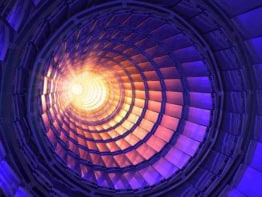
Scientists and art historians have developed what they say is a foolproof way of identifying forged works of art. They can distinguish between art created before 1945 and that produced after that date by measuring levels of the isotopes caesium–137 and strontium–90. These isotopes do not occur naturally but are released into the environment by nuclear blasts.
Over 2000 nuclear tests have been carried out since the first atomic explosion took place in New Mexico in July 1945, and the Japanese cities of Hiroshima and Nagasaki were bombed a few weeks later. Among the by-products of these tests are caesium-137 and strontium-90, tiny quantities of which make their way into the Earth’s soil and plants. It is then via the natural oils, such as linseed from the flax plant, that are used as binding agents in paints that these isotopes end up in post-1945 art.
According to The Art Newspaper, the idea of using non-naturally occurring isotopes to identify forged paintings occurred to Elena Basner while she was working as curator of 20th-century art at the Russian Museum in St Petersburg. Basner, who is now a consultant for the Swedish auctioneers Bukowskis, said she was spending lots of time trying to distinguish between fakes and genuine works of art, given the high quality that forgers have managed to attain.
Mass spectrometer
Basner contacted a number of scientists to find a reliable and systematic way of weeding out forgeries. She ended up working with Andrey Krusanov, a freelance chemist and writer with an interest in the history of Russian avant-garde painting. Several physicists, chemists and mineralogists at the Russian Academy of Sciences in St Petersburg were also involved. Together they hit upon the idea of looking for the presence or absence of caesium–137 and strontium–90 using a mass spectrometer
The patented technique involves extracting tiny (of the order of 1 square millimetre) samples from paintings. The team were able to show that the two isotopes are not present in paintings from the first half of the 20th century, but that there were traces in paintings done in the 1950s.
Basner says she plans to use the technique to identify post-war imitations of Russian avant-garde works produced between 1900 and 1930. According to Basner, the originals are now probably outnumbered by the imitations, which first started to appear on the market in the 1960s. But she believes that, like any other work of art, if these paintings contain traces of caesium–137 and strontium–90 then they can be definitely declared post-1945 forgeries.
However, as Antonia Kimbell points out, while the presence of these isotopes would prove that a pre-1945 painting is a fake, their absence does not necessarily mean that the painting is genuine. Kimbell, who woks for the Art Loss Register, a UK organization that helps to tackle art crime, says that cunning forgers can reproduce paintings using canvasses and paints from the period in question. She therefore believes that while the technique will prove to be useful in identifying forgeries it must be combined with research on other indicators of authenticity, such as stylistic composition and provenance.



